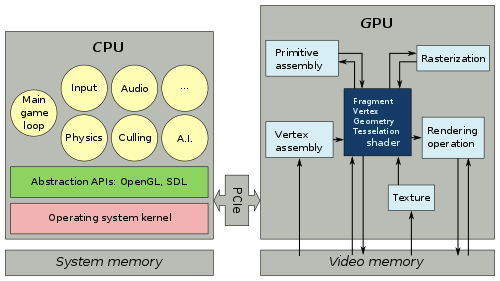API 620 - Do ALL 'T' Joints Require RT?
API STD 620, 12th Edition, October 2013 - Design and Construction of Large, Welded, Low-pressure Storage Tanks General The API Downstream Segment has prepared this standard to cover large, field-assembled storage tanks of the type described in 1.2 that contain petroleum intermediates (gases or vapors) and finished products, as well as other liquid products commonly handled and stored by the. A small amount of time will be devoted to API Standard 620, which deals with low pressure storage tanks, such as tanks with blanketing gas and refrigerated products (butane, propane, LNG, etc.), and smaller tanks such as oilfield production tanks and Underwriters Laboratory tanks. API Standard 620 is applicable to tanks and vessels designed for low-pressure storage, ranging from about 2.5 psig to 15 psig. The provisions of (and changes to) API 620 with regard to leak and spill prevention are essentially the same as those of API 650 and so will not be separately addressed in this paper.
API 620 - Do ALL 'T' Joints Require RT?

We presently have a 316L matl 3/8' wall thk. cyclone separator (F&D head & cone bottom) that the Client has speced out to API 620 Code. The operating temp is 215 deg F and design temp is 300 deg F, op pressure is 3 psig to 5 in. wc vacuum and design pressure is 7.5 psig to 15 in. wc vacuum.
Client test reqs are 10 psig hydro and spot RT w/ 85% jnt efficiency.
API 620 states in 5.26 Radiographic/Ultrasonic Examination
5.26.4.3 (a) When parts of tanks do not require complete examination, circumferential joints in cylindrical or conical surfaces need to be prepared and examined for a distance of only 3 in. on each side of any intersection with a longitudinal joint. All joints in a spherical, torispherical, or ellipsoidal shape or in any other surface or double curvature shall be considered longitudinal joints.
Does this mean that ALL 'T' type joints (circ.-to-long seams) REQUIRE RT?
Appreciate your interpretation and comments,
Robert
Microsoft Graph is a RESTful web API that enables you to access Microsoft Cloud service resources. After you register your app and get authentication tokens for a user or service, you can make requests to the Microsoft Graph API.
Important: How conditional access policies apply to Microsoft Graph is changing. Applications need to be updated to handle scenarios where conditional access policies are configured. For more information and guidance, see Developer Guidance for Azure Active Directory Conditional Access.
OData namespace
Api 620 Code Free Shipping
The Microsoft Graph API defines most of its resources, methods, and enumerations in the OData namespace, microsoft.graph, in the Microsoft Graph metadata. A small number of API sets are defined in their sub-namespaces, such as the call records API which defines resources like callRecord in microsoft.graph.callRecords.
Unless explicitly specified in the corresponding topic, assume types, methods, and enumerations are part of the microsoft.graph namespace.
Call a REST API method
To read from or write to a resource such as a user or an email message, you construct a request that looks like the following:
The components of a request include:
- {HTTP method} - The HTTP method used on the request to Microsoft Graph.
- {version} - The version of the Microsoft Graph API your application is using.
- {resource} - The resource in Microsoft Graph that you're referencing.
- {query-parameters} - Optional OData query options or REST method parameters that customize the response.
After you make a request, a response is returned that includes:
- Status code - An HTTP status code that indicates success or failure. For details about HTTP error codes, see Errors.
- Response message - The data that you requested or the result of the operation. The response message can be empty for some operations.
nextLink- If your request returns a lot of data, you need to page through it by using the URL returned in@odata.nextLink. For details, see Paging.
HTTP methods
Microsoft Graph uses the HTTP method on your request to determine what your request is doing. The API supports the following methods.
| Method | Description |
|---|---|
| GET | Read data from a resource. |
| POST | Create a new resource, or perform an action. |
| PATCH | Update a resource with new values. |
| PUT | Replace a resource with a new one. |
| DELETE | Remove a resource. |
- For the CRUD methods
GETandDELETE, no request body is required. - The
POST,PATCH, andPUTmethods require a request body, usually specified in JSON format, that contains additional information, such as the values for properties of the resource.
Version
Microsoft Graph currently supports two versions: v1.0 and beta.
v1.0includes generally available APIs. Use the v1.0 version for all production apps.betaincludes APIs that are currently in preview. Because we might introduce breaking changes to our beta APIs, we recommend that you use the beta version only to test apps that are in development; do not use beta APIs in your production apps.
We are always looking for feedback on our beta APIs. To provide feedback or request features, see our UserVoice page.
For more information about API versions, see Versioning and support.
Resource
A resource can be an entity or complex type, commonly defined with properties. Entities differ from complex types by always including an id property.
Your URL will include the resource you are interacting with in the request, such as me, user, group, drive, and site. Often, top-level resources also include relationships, which you can use to access additional resources, like me/messages or me/drive. You can also interact with resources using methods; for example, to send an email, use me/sendMail. For more information, see Access data and methods by navigating Microsoft Graph.
Each resource might require different permissions to access it. You will often need a higher level of permissions to create or update a resource than to read it. For details about required permissions, see the method reference topic.
For details about permissions, see Permissions reference.
Query parameters
Query parameters can be OData system query options, or other strings that a method accepts to customize its response.
You can use optional OData system query options to include more or fewer properties than the default response, filter the response for items that match a custom query, or provide additional parameters for a method.
For example, adding the following filter parameter restricts the messages returned to only those with the emailAddress property of jon@contoso.com.
For more information about OData query options, see Use query parameters to customize responses.
Aside from OData query options, some methods require parameter values specified as part of the query URL. For example, you can get a collection of events that occurred during a time period in a user's calendar, by querying the calendarView relationship of a user, and specifying the period startDateTime and endDateTime values as query parameters:
Tools for interacting with Microsoft Graph
Graph Explorer
Graph Explorer is a web-based tool that you can use to build and test requests using Microsoft Graph APIs. You can access Graph Explorer at: https://developer.microsoft.com/graph/graph-explorer.
You can either access demo data without signing in, or you can sign in to a tenant of your own. Use the following steps to build the request:
- Select the HTTP method.
- Select the version of API that you want to use.
- Type the query in the request text box.
- Select Run Query.
The following example shows a request that returns information about users in the demo tenant:
Api 620 Code
Sample queries are provided in Graph Explorer to enable you to more quickly run common requests. To see the samples that are available, select show more samples. Select On for the set of samples that you want to see, and then after closing the selection window, you should see a list of predefined requests.

A status code and message are displayed after a request is sent and the response is shown in the Response Preview tab.
Postman
Postman is a tool that you can use to build and test requests using the Microsoft Graph APIs. You can download Postman at: https://www.getpostman.com/. To interact with Microsoft Graph in Postman, you use the Microsoft Graph collection.
For more information, see Use Postman with the Microsoft Graph API.
Next steps
Api 620 Code Free Download
You're ready to get up and running with Microsoft Graph. Try the Quick Start, or get started using one of our SDKs and code samples.